Health and Safety of Children and Youth in Northern Virginia
January 29, 2025 at 12:00 pmThe Community Foundation’s data and research center, Insight Region®, launched a dynamic series of deep-dive sessions where we uncover the key factors shaping our upcoming 2025 Children & Youth Report. Each session is led by our Senior Director of Insight Region®, Denise Bellows.
Learn more by watching our recording and reading our recap questions.
This session focused on the safety and health of youth in Northern Virginia, with a special emphasis on critical issues affecting students today. This session will explore: feelings of safety at school, death by suicide prevalence and risk, and substance use trends.
Slides are available here
This webinar will provide valuable insights for educators, parents, mental health professionals, and community leaders, dedicated to supporting youth health and safety.
Recap Questions:
ON DEATH BY SUICIDE PREVENTION:Can you share any data or trends on how death by suicide rates among youth in Northern Virginia compare to national averages?
The youth suicide rate in Northern Virginia has gone up a bit, from 5.5 per 100,000 in 2010 to 8.2 per 100,000 in 2022. While any increase is concerning, it’s worth noting that Northern Virginia’s rate is still much lower than the national average, which is 14 per 100,000.
When it comes to firearm deaths in the region, more than half are suicides, not homicides. Though there was a big jump in firearm injuries between 2019 and 2020, things have gotten better since then. Still, the numbers haven’t quite dropped back to pre-pandemic levels.
ON SUBSTANCE USE TRENDS:
Are there any emerging trends in substance use among youth in Northern Virginia that you think are important for educators and parents to be aware of?
Out of the 1,712 opioid overdose deaths in Northern Virginia, about 15% (or 255 deaths) were among young people aged 0-24. That’s high compared to the national average, where only 7% of opioid overdose deaths happen in that age group. The Virginia Department of Health has recently flagged certain areas in Northern Virginia as ‘high need’ for better drug overdose prevention and support.
While the wider availability of Narcan has likely helped reduce opioid deaths over the past two years, substance use itself hasn’t really gone down. In fact, overdose deaths from cocaine are still on the rise, likely because of fentanyl contamination.
When it comes to youth hospitalizations, cannabis-related visits for those aged 0-19 are almost three times higher than alcohol-related ones.
GENERAL QUESTIONS:
What has shifted in the landscape of health and safety for our region’s youth since our previous report in 2010?
Over the past ten years, the number of high school students in Virginia who say they’ve skipped school because they felt unsafe has more than doubled. Hispanic and Latino youth, in particular, report feeling unsafe at school or in their neighborhoods more often than other groups. Right now, only 68% of schools have a School Resource Officer (SRO), and most students and teachers without one say they’d feel safer if there was one at their school.
When it comes to electronic bullying, it’s been on the rise among middle schoolers over the past decade. Interestingly, 6th and 12th graders in Northern Virginia report being bullied online more than students their age in other parts of the state. In other grades, though, bullying in Northern Virginia is still reported less than in the rest of the Commonwealth, just like it was back in 2010.
What are some surprises from the research in this section of the report that you found?
Overall, Northern Virginia is a pretty safe place for our youth. But over the past decade, there have been some changes that have put certain groups of young people at greater risk than we’ve seen before.
For one, phones and social media have given bullying a whole new outlet. Fentanyl continues to be a big problem here, just like it is across the country, and we’re seeing more fentanyl-related deaths, especially among cocaine users.
Cannabis-related hospitalizations have also gone up, and now they’re more common than alcohol-related hospitalizations among young people.
Sadly, youth suicides have been rising, and firearms are often involved in these tragedies.
On the topic of substance abuse, it’s worth noting that opioids weren’t even mentioned in the 2010 report. Back then, the only substances we were talking about were alcohol and marijuana. Bullying didn’t even come up as an issue. It’s just a sign of how much things have changed in the past decade.
If you want to dive deeper into these issues, hear from local youth, and explore ways we can support young people moving forward, come join us at Shape of the Region.

 Questions?
Questions? Questions?
Questions?




